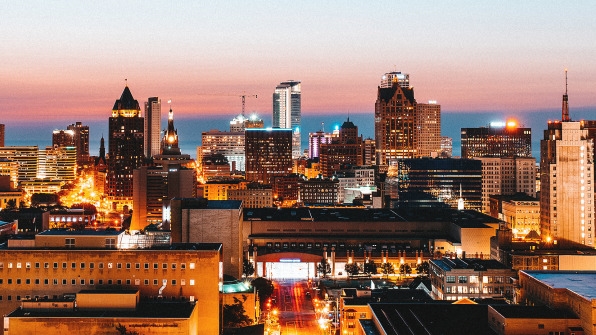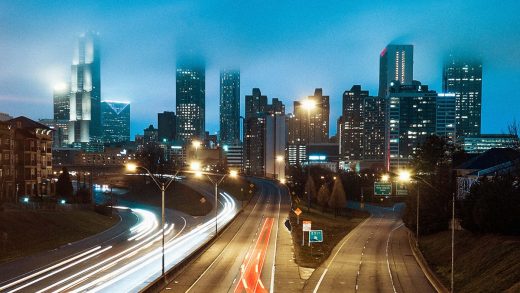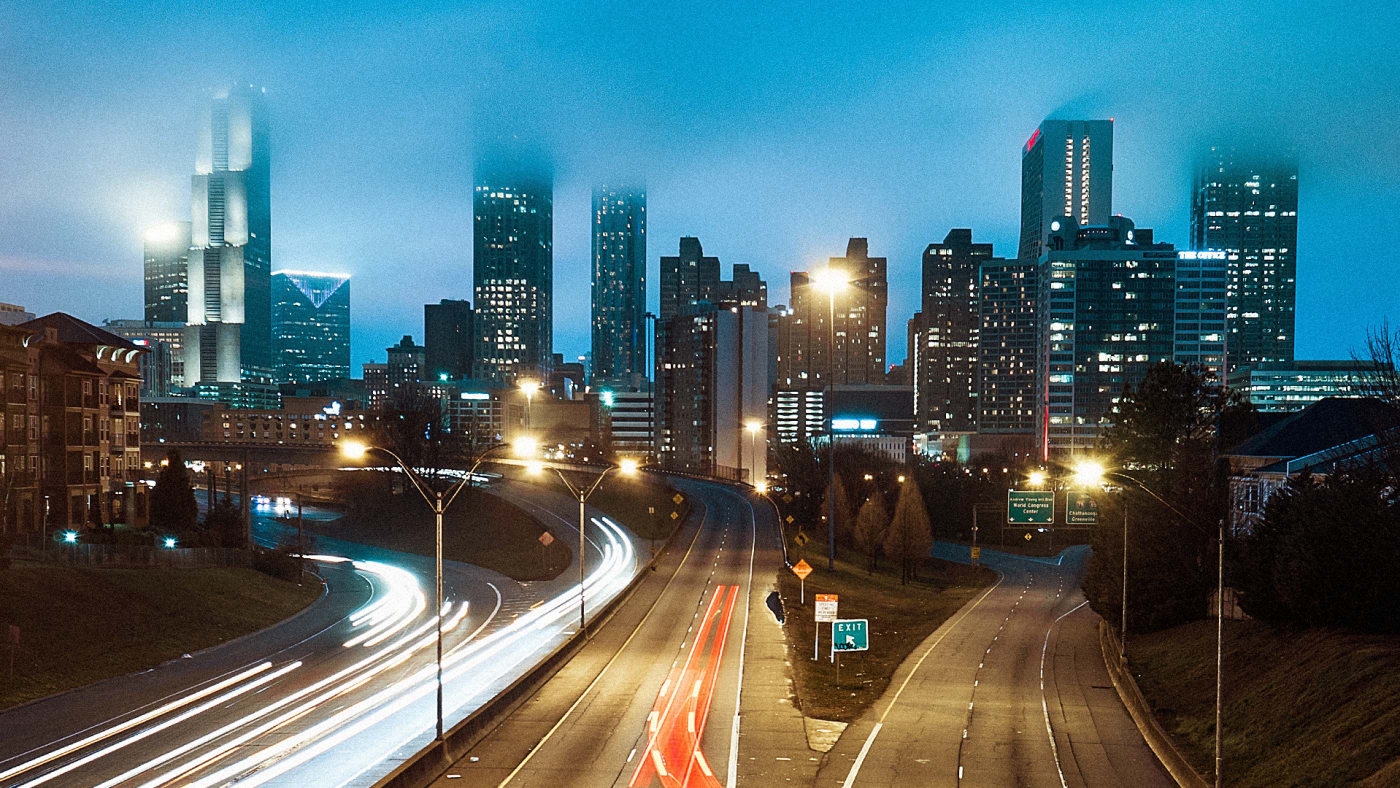What needs fixing in U.S. cities? Ask the mayors
In their State of the City addresses, mayors express their priorities for our cities–the challenges and opportunities–and their vision for our country.
Cities are where innovation thrives, and the best ideas rise from the ground up. Nowadays, much of the success we see in cities is built on partnerships with the private sector, nonprofits, and other organizations and groups. But this need for strong partnerships is why relationships between and amongst government–federal, state and local–are a core concern for mayors in this year’s State of the Cities research.
As preemption and populism rise, relationships between cities and other levels of government are becoming strained. Nevertheless, mayors across America are focused on getting the job done and leading with a positive agenda for growth, equity and opportunity. Mayors don’t deal in empty rhetoric; they deal in getting the job done.
Two issues that elucidate this are the intractable challenges of climate change and the opioid crisis. On climate change, mayors are leading, and a number of cities have made local commitments to climate solutions in light of the federal government’s withdrawal from the Paris Agreement.
Meanwhile, the opioid crisis has been a human tragedy and a drain on public resources. As with climate change, in this year’s analysis, we find mayors are much more focused on solutions: harm reduction strategies, drug take-back events, addiction treatment and legal action against pharmaceutical companies.

Our National League of Cities State of the Cities report examines 160 State of the City addresses in cities large and small. Below are the top 10 issues that matter to cities:
10: Demographics (mentioned in 12% of speeches)
“A great City takes care of young and old, and those who may be dealing with challenges and hard times.”–Mayor Kim McMillan, Clarksville, TN
Mayors are building more inclusive communities by encouraging residents to embrace diversity and the collective riches of different cultures, experiences, and perspectives. As the nation becomes more fraught with tensions over immigration policy, cities are implementing programs that support cultural diversity.
9: Data and Technology (mentioned in 14% of speeches)
“Today, that critical connection to the wider world isn’t just physical–it’s digital.”–Mayor Jim Gray, Lexington, KY
Cities are focused on increasing transparency and leveraging technology to update and improve systems. Many are trying to transition into “smart cities,” with applications—such as signal and sensor networks and small cell wireless infrastructure—emerging as critical areas that help increase efficiency and equitability in urban environments.
8: Energy and Environment (mentioned in 25% of speeches)
“As we recruit new business, we will continue to prioritize our city’s clean energy goals.”–Mayor Jackie Biskupski, Salt Lake City, UT
Mayors are promoting the use of renewable energy and infrastructure upgrades to ensure their cities are—and remain—sustainable and resilient. Cities are promoting the development and use of clean, renewable energy sources such as solar and wind, and building resilience into critical infrastructure.
7: Education (mentioned in 28% of speeches)
“I will work with stakeholders across the city to create a citywide Children’s College Savings account…to make sure that all of our young people have an equal and fair chance.”–Mayor Keisha Lance Bottoms, Atlanta, GA
Mayors are devoted to providing equitable educational opportunities for youth to prepare the future workforce. Cities are working to minimize college costs so that a university degree is a choice, not a challenge. At the same time, pathways must be built to support those not destined for college, with career training and readiness programs that promote success.
6: Health and Human Services (mentioned in 34% of speeches)
“Today, the lines have begun to blur between physical safety and public health, especially where addiction and mental health are concerned.”–Mayor Pete Buttigieg, South Bend, IN
Mayors are seeking to improve community health outcomes through wellness initiatives. Last year, some of the nation’s most influential mayors established an ambitious objective—all Americans should live within a 10-minute walk of a high-quality park or green space. In keeping with that goal, many mayors highlighted the importance of improving parks systems and expanding usage by all.
5: Public Safety (mentioned in 36% of speeches)
We need action at the federal and state level to reduce gun violence. It is beyond disturbing
that those in power fail to address the need for background checks,”—Mayor Tom Barrett, Milwaukee, WI.
City leaders are working to make communities safer, especially when it comes to gun-related violence—calling on federal and state lawmakers to take action. Gun violence in schools is an issue all Americans are deeply attuned to, and mayors are taking proactive steps and seeking to lead with common sense solutions.
4: Housing (mentioned in 39% of speeches)
“Homelessness represents nothing short of a humanitarian crisis. It is unacceptable to me, and I hope to you.”–Mayor Ted Wheeler, Portland, OR
Homelessness and affordable housing are defining issues of our time. Mayors recognize that there isn’t enough affordable housing to go around, and several of them are finding ways to do more—even with constraints like less overall federal funding for affordable housing.
3: Budgets & Management (mentioned in 49% of speeches)
“As we work with Council on adopting the 2018 budget, it will be important that we
seriously look at the imbalance in capital needs and available funds.”–Mayor Kirsten Gail, Euclid, OH
Budgeting means making choices and setting priorities. Mayors empower community residents by sharing information transparently and exploring sustainable alternative revenue sources. Many mayors voiced concerns about state overreach and fiscal constraints.
2: Infrastructure (mentioned in 56% of speeches)
“Our nation’s infrastructure is structurally deficient … So, nationwide, cities have turned to the federal government asking for a true partner.”–Mayor Mark Stodola, Little Rock, AR
One of the most important responsibilities of local governments is maintaining and improving infrastructure—transportation, water and sewer, technology, and communications—that benefits all residents. Wireless access was increasingly popular this year, and mayors are developing plans to increase the geographic reach of wireless connectivity.
1. Economic Development (mentioned in 58% of speeches)
“My goal is for every neighborhood in Birmingham to become … a place that people actively choose to live [in].”—Mayor Randall Woodfin, Birmingham, AL
Since the beginning of our State of the Cities research, we have found economic development to be mayors’ number one priority. Cities are supporting innovation and the arts, recognizing that attracting large employers is not enough to spur economic growth. Arts and culture is in fact the most popular economic development topic among mayors this year. And, what is economic development without the creative development of our communities, and creating a place for artists and residents alike to hang their hats?
It all comes down to the central fact that city leaders are inherently solutions-oriented. The brilliance of local government is its unique place in our American experiment, wisely built on a federal structure. For this structure to work best, we need to all work together—city, state and federal governments. This great country must better reflect that America is a nation of cities.
(32)



